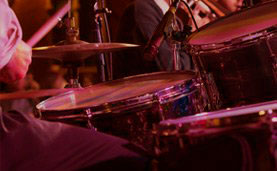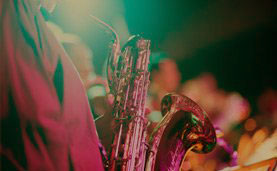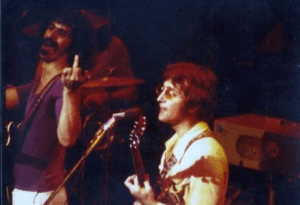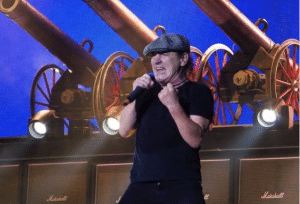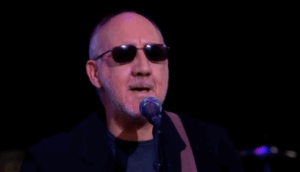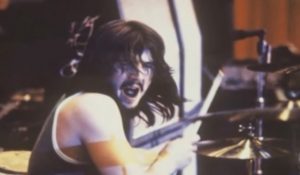10 Songs Fans Want To See Live In RUSH 2026
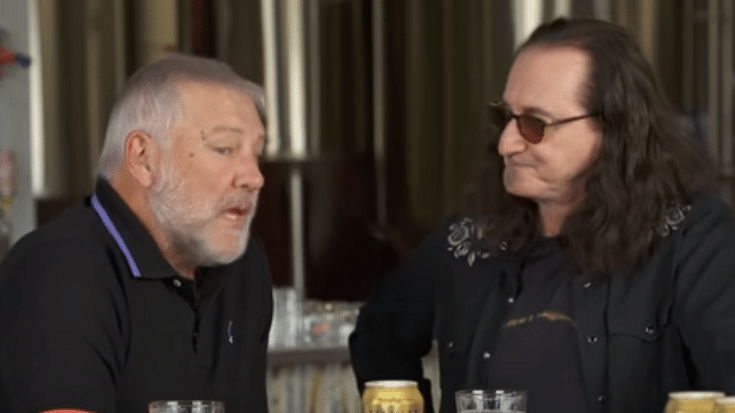
via Rush / YouTube
Rush’s long history of pushing boundaries means their tours have always been more than concerts—they’re events that blend technical mastery, storytelling, and raw emotion. Now, with talk of the band’s “Fifty Something” tour in 2026, fans are buzzing about what songs might make the cut. After decades of music that defined progressive rock, anticipation is high for which gems might return to the stage—or finally make their live debut.
What makes this particular moment exciting is the mix of nostalgia and curiosity. Die-hard fans aren’t just asking for the hits; they’re calling for deep cuts that capture Rush’s experimental spirit, the kind of songs that remind everyone why this trio was never content to repeat themselves. The discussions happening across fan communities reveal not just affection, but a sense of unfinished business—tracks that deserve their moment under the stage lights.
As the band’s next chapter looms, the idea of a new setlist feels both emotional and electric. These aren’t just songs; they’re memories and milestones. From the anthems that filled arenas to the lesser-known pieces that showcase Rush’s adventurous side, fans are crafting their dream lineup for one more night of time signatures, poetry, and pure musical power.
“Tom Sawyer”
No Rush concert would ever feel complete without “Tom Sawyer.” This staple from Moving Pictures remains one of the most instantly recognizable songs in rock history, with its signature synth intro, intricate drumming, and lyrics that still spark reflection decades later. For longtime fans, it’s not just a song—it’s the sound of Rush at their creative peak.
What makes the idea of hearing “Tom Sawyer” live in 2026 particularly thrilling is the introduction of drummer Anika Nilles. Known for her precision and groove, Nilles brings a fresh perspective to Neil Peart’s legendary parts. Fans are eager to see how she’ll interpret the polyrhythms and fills that have challenged drummers for generations, while still honoring the song’s spirit.
As the lights dim and that unmistakable synth note kicks in, the crowd will know exactly what’s coming. “Tom Sawyer” has always been a bridge between Rush’s complex musicianship and their mainstream success, and its inclusion on the 2026 setlist feels inevitable. The question isn’t if they’ll play it—but how Nilles and the band will make it feel new again.
“The Spirit of Radio”
Few songs capture the joy of music like “The Spirit of Radio.” It’s Rush at their most uplifting—a sparkling celebration of sound, freedom, and connection. The opening riff alone can fill a stadium with pure energy, a sonic burst that perfectly encapsulates the thrill of tuning into something that moves you.
Lyrically, Neil Peart crafted a heartfelt tribute to the power of radio and the magic of discovery, a message that feels just as relevant in the streaming age. Geddy Lee’s vibrant delivery and Alex Lifeson’s crisp guitar work make it impossible not to smile when it plays.
Fans can’t imagine a Rush setlist without it. “The Spirit of Radio” isn’t just a reminder of the band’s legacy—it’s a moment of shared celebration between performer and audience, proof that joy and virtuosity can live in the same song.
“2112 (Overture / Temples of Syrinx)”
When fans talk about Rush’s defining masterpiece, “2112” always takes center stage. Its opening “Overture” still gives goosebumps, a rush (no pun intended) of sound that feels like a declaration of purpose. The “Temples of Syrinx” segment, meanwhile, channels the band’s rebellious heart—a defiant anthem about the freedom of expression through music.
Hearing even a portion of this epic live is a near-religious experience for longtime fans. The interplay between the instruments—Lifeson’s soaring solos, Lee’s booming bass, Peart’s storytelling precision—turns every bar into a moment of drama. It’s progressive rock at its grandest and most fearless.
A full performance of “2112” would be a dream come true in 2026. But even if Rush only offers the highlights, that unmistakable opening riff is enough to send the crowd into instant euphoria. It’s the sound of Rush’s legacy roaring back to life.
“YYZ”
“YYZ” is the track where Rush lets the instruments do all the talking—and what a conversation it is. Named after Toronto’s airport code, it’s a dazzling display of musicianship that somehow manages to be both precise and spontaneous. Every time it’s played live, fans are treated to a masterclass in coordination and creativity.
The song’s rhythm is famously built around Morse code for “YYZ,” a clever touch that showcases the band’s love of detail. What follows is a whirlwind of bass runs, drum fills, and guitar acrobatics that leave audiences stunned. It’s the kind of performance that reminds everyone why Rush’s chemistry was once-in-a-lifetime.
For the 2026 tour, “YYZ” is non-negotiable. It’s not just an instrumental—it’s Rush communicating directly with their fans, wordlessly saying everything that needs to be said.
“Limelight”
“Limelight” remains one of the most emotionally resonant songs in Rush’s catalog. On the surface, it’s an arena-ready rocker; underneath, it’s a deeply personal reflection from Neil Peart about fame, distance, and the fragile boundary between public and private life. His words, paired with Geddy Lee’s aching delivery, make it unforgettable.
Musically, the song is a masterclass in balance. Alex Lifeson’s shimmering guitar tone gives it warmth, while Geddy’s melodic bass adds tension beneath the surface. It’s both reflective and powerful—an introspective anthem that still makes crowds sing at full volume.
Hearing “Limelight” live in 2026 would carry an even deeper weight. It’s a song about human connection from a band that always valued authenticity over celebrity. And after all these years, its message feels more poignant than ever.
“La Villa Strangiato”
“La Villa Strangiato” is Rush’s progressive rock showpiece—a whirlwind of precision, humor, and musical storytelling. From the first notes, it takes listeners on a cinematic journey through shifting tempos, blistering solos, and playful detours that only Rush could pull off. It’s the band flexing their full technical might while still sounding completely human.
Every live performance of this instrumental has been a jaw-dropping experience. Alex Lifeson’s guitar wizardry, Geddy Lee’s nimble bass, and Neil Peart’s impeccable timing once made it one of the most challenging pieces in their repertoire. For 2026, fans are eager to see how Anika Nilles’ drumming will reinterpret Peart’s rhythmic complexity while maintaining the spirit of the original.
Hearing “La Villa Strangiato” live again would be a gift to every fan who appreciates Rush’s fearless ambition. It’s more than a song—it’s a statement of everything the band stands for: discipline, creativity, and joy in the art of musicianship.
“Subdivisions”
“Subdivisions” has aged like fine wine, resonating even more deeply today than when it was released in 1982. The song speaks to anyone who’s ever felt out of place, blending Neil Peart’s poignant lyrics with the shimmering synthesizers that defined Rush’s Signals era. It’s both melancholy and triumphant, capturing the bittersweet nature of growing up.
Musically, it marks one of the band’s boldest shifts—moving away from pure guitar rock into synth-driven soundscapes without sacrificing emotional weight. Geddy Lee’s haunting vocals and Lifeson’s atmospheric guitar textures make it an unforgettable live moment.
For 2026, “Subdivisions” feels essential. Its themes of conformity and individuality are more relevant than ever, and its sonic landscape remains captivating. When those opening chords ring out, it won’t just be a song—it’ll be a shared moment of recognition between band and audience.
“Red Barchetta”
Rush has always excelled at turning stories into songs, and “Red Barchetta” might be their finest example. Inspired by a short story about a world where driving is outlawed, the track captures the thrill of freedom, rebellion, and motion. Every instrument contributes to the narrative, from the gliding basslines to the propulsive drumming and vivid guitar leads.
Hearing it live is like watching a film unfold in sound. The soft intro sets the scene, the middle section races through danger, and the ending leaves you breathless. It’s a perfect showcase of Rush’s ability to blend storytelling with technical brilliance.
Fans have been vocal about wanting it back for 2026, and it’s easy to see why. “Red Barchetta” embodies the spirit of adventure that runs through the band’s entire catalog—a reminder that Rush didn’t just play music, they painted with it.
“Closer to the Heart”
“Closer to the Heart” is Rush at their most melodic and philosophical, a song that distills their ideals into just a few powerful minutes. With its message about compassion and change beginning within the individual, it stands as one of their most universally loved compositions. It’s not just a fan favorite—it’s a song that defines Rush’s moral and artistic core.
Over the years, it’s become a live staple, with audiences often singing along to every word. Lifeson’s acoustic intro transitions seamlessly into a soaring electric section, creating a blend of intimacy and grandeur few rock bands ever achieve. It’s the perfect breather between the band’s heavier, more complex pieces.
Including “Closer to the Heart” in the 2026 setlist would be a nod to the band’s humanity amid all the technical wizardry. It’s a timeless anthem that proves even progressive rockers can touch the soul as deeply as they dazzle the mind.
“The Garden”
“The Garden” is the crown jewel of Rush’s later years—a song that feels like both a farewell and a reflection. From Clockwork Angels, it captures the wisdom and serenity of a band looking back at everything they’ve achieved. The orchestral layers, Geddy’s tender vocals, and Peart’s introspective lyrics make it one of the most emotionally charged pieces in their catalog.
As a potential closing track for the 2026 tour, it would carry tremendous emotional weight. The song’s message—that what truly matters in life are love, growth, and meaning—resonates deeply with fans who’ve followed the band through every phase. It’s both personal and universal, humble yet profound.
Ending a concert with “The Garden” would feel like closing a long, beautiful chapter. It’s a song that reminds fans why Rush’s music endures: because beneath all the complexity lies heart, honesty, and a quiet sense of gratitude.


